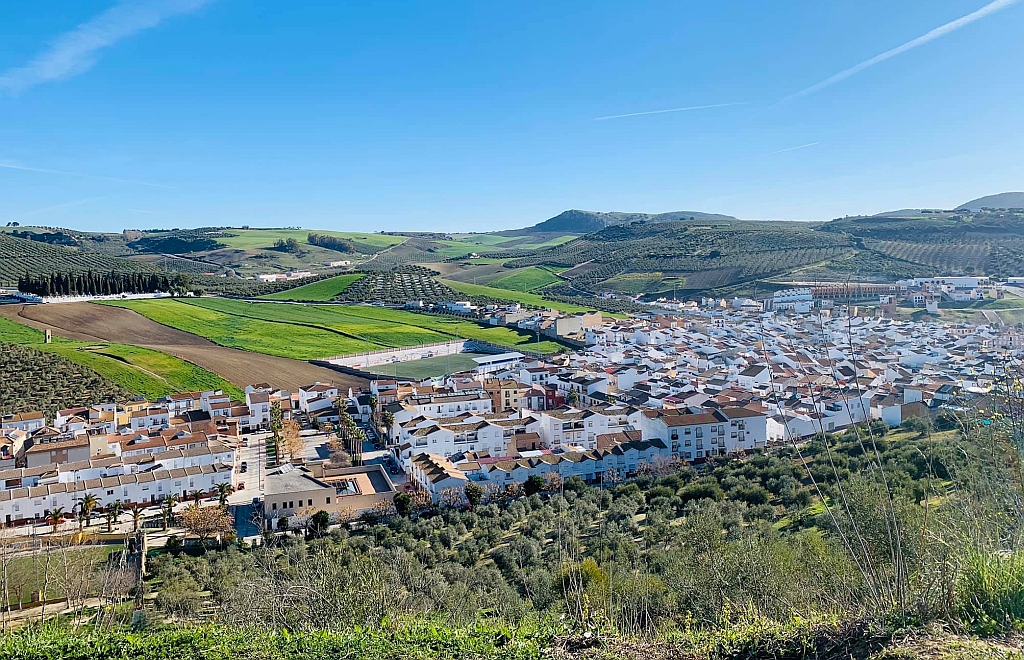Alcalá del Valle lies in the western part of the Serranía de Ronda, within the Ronda Depression, covering an area of 45.2 square kilometres. This village, a close neighbour to Málaga, sits 24 kilometres from Ronda and 155 kilometres from Cádiz. Due to its unique position within a depression and crisscrossed by several streams, Alcalá del Valle enjoys a slightly milder climate than the surrounding highlands. Traditionally a village of emigrants, Alcalá has recently experienced a revival with the introduction of new agricultural crops, encouraging locals to stay and invest in the area.
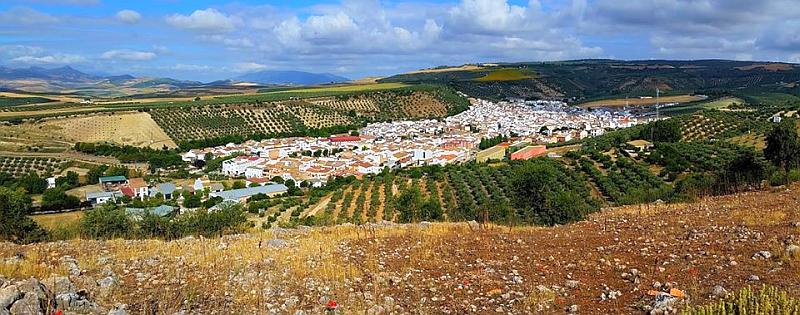
Listen to the podcast about Alcalá del valle and the surrounding area.
In this episode, we take you to Alcalá del Valle, a picturesque white village tucked between limestone peaks and olive groves in northern Cádiz. But before we do, we’ll take a look at the surrounding area and some of Clive’s other projects that explore the rich heritage of Andalusia.
Origins of Alcalá del Valle
Archaeological findings reveal that Alcalá del Valle was a prehistoric settlement. The village’s origins trace back to a group of 25 Muslims expelled from Setenil, who, after surrendering to the Catholic Monarchs, settled here as vassals in a place known as El Castillón, naming it “Al-kala” (meaning “The Castle” in Arabic). Some historians propose alternative theories, suggesting that Alcalá del Valle may have been a settlement during the Al-Andalus period, recognised for its almona (soap factory).
In the modern era, Alcalá del Valle was part of the Kingdom of Granada and, later, the province of Málaga, until it officially joined the province of Cádiz in 1834. Regrettably, much of Alcalá’s modern historical records were lost when, in 1903, a general strike led to the burning of town hall archives and court records, leaving only the parish records, dating back to 1546. However, recent discoveries at Fuente Grande have uncovered remnants of a Roman settlement, affirming the village’s ancient origins.
Getting To Alcalá del Valle
Alcalá del Valle is conveniently located 30 km from Ronda and 60 km from the Costa del Sol, accessible by car from Málaga Airport. The A-384 is a major route connecting Alcalá del Valle with Andalusia’s main cities (Sevilla, Granada, Cádiz, and Málaga) as well as popular tourist centres such as Jerez and Ronda.
Find a hotel in Alcalá del Valle
There are plenty of places to stay in the area. We spent two nights in the fantastic Molino Romano guest house located perfectly to explore the area.
Alcalá del Valle tourist promo video
Alcalá del Valle made its mark at FITUR 2025, the International Tourism Trade Fair in Madrid, by presenting itself as a destination where culture, tradition, and exceptional gastronomy come together.
Featuring local Michelin-starred chef Pedro Aguilera Jiménez, this presentation placed Alcalá del Valle at the heart of Spain’s culinary map. From authentic experiences to unforgettable flavours, the town offers a unique escape for travellers seeking something real.
History of Alcalá del Valle
Although Alcalá del Valle has Muslim roots, archaeological evidence, including the Dólmenes de Tomillo (Tomillo Dolmens) suggests habitation as far back as prehistoric times, showcasing the area’s rich megalithic culture.
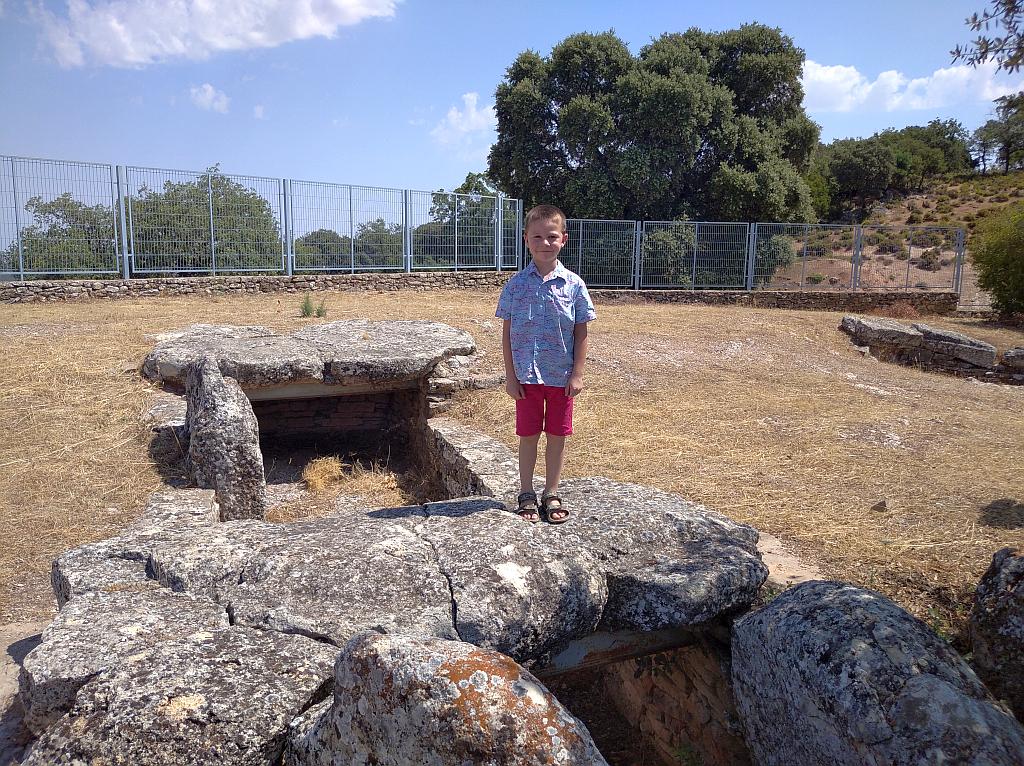
Founded by a community of Muslims who, after the Christian conquest of Setenil de las Bodegas, sought permission from the Catholic Monarchs to establish a new settlement, Alcalá del Valle was born. Initially, the settlers built homes and fortifications in a place known as “El Castillón,” but Christian opposition forced them to move to the valley, where they established a new enclave near natural springs.

Alcalá del Valle, originally known by various names such as Alcalá de las Bodegas and Alcalá de Ronda, finally received its official name in 1770. Although it initially belonged to the province of Málaga, it was transferred to Cádiz in 1834.
The general strike led by the Federación Española de Sociedades de Resistencia (Spanish Federation of Resistance Societies)
On 1 August 1903, in response to a general strike led by the Federación Española de Sociedades de Resistencia (Spanish Federation of Resistance Societies), around 500 labourers gathered outside Alcalá. A confrontation with the Guardia Civil led to the death of a young local known as “el peluo” (the hairy one). This tragic event sparked the burning of the town hall and court archives by the townsfolk.
Following reinforcements from the Guardia Civil, more than a hundred labourers were arrested and transferred to Ronda’s prison. Reports of mistreatment and torture endured by detainees made headlines across Spain, Europe, and America.
In 1909, five prisoners still held in detention were pardoned, though one had passed away in prison.
Economy Of Alcalá del Valle
Alcalá del Valle’s economy is primarily agricultural, with particular acclaim for its espárragos (asparagus). This product, highly valued for its tender, earthy flavour, is a key ingredient in many traditional dishes of the area.
Climate Of Alcalá del Valle
Alcalá del Valle has a Mediterranean climate with Atlantic influences. However, its location within the Ronda highlands moderates the typically cool regional temperatures. The average annual temperature is around 14.6°C, with summer highs reaching 32.4°C and winter lows at 3.1°C. Average yearly rainfall is approximately 762 mm.
Monuments and Places of Interest in Alcalá del Valle
Necrópolis de Tomillos
The Necrópolis de Tomillos is a set of prehistoric tombs located near the Cerro de la Cacería necropolis, one of Alcalá del Valle’s oldest landmarks. Here, the ancient tradition of ancestor worship dates back to the Neolithic period.
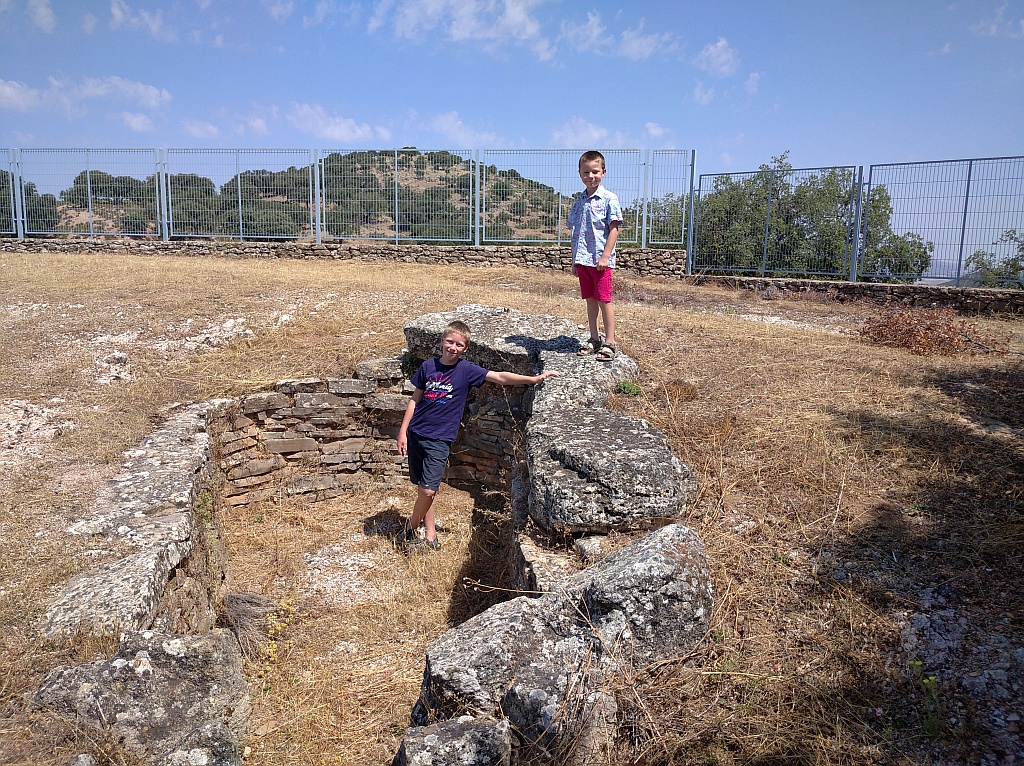
Noteworthy is the use of the site over centuries, as evidenced by burial artefacts from the Chalcolithic right through to the Bronze Age. An exceptional find here is a menhir (standing stone), the only one of its kind discovered within an Andalusian dolmenic necropolis.
Location: on the road from Alcalá to Olvera. Just look out for the signposts!
Other Sites of Interest
- Convento de Caños Santos: Built in the 16th century, this convent, located 6 km from Alcalá, is set in stunning natural surroundings with lush greenery. It overlooks a scenic landscape and is home to various rare plant species. Its name derives from nearby caños (natural springs) that emerge from a rock cavity.
- Church of Santa María del Valle: A baroque-style church dating back to the 17th and 18th centuries. Notable features include a 16th-century stone baptismal font from the original Santuario de Caños Santos and a polychrome relief depicting the miracle associated with the sanctuary’s foundation.
- La Cacería: A historic architectural complex believed to have served as lodging for hunters from the surrounding mountains.
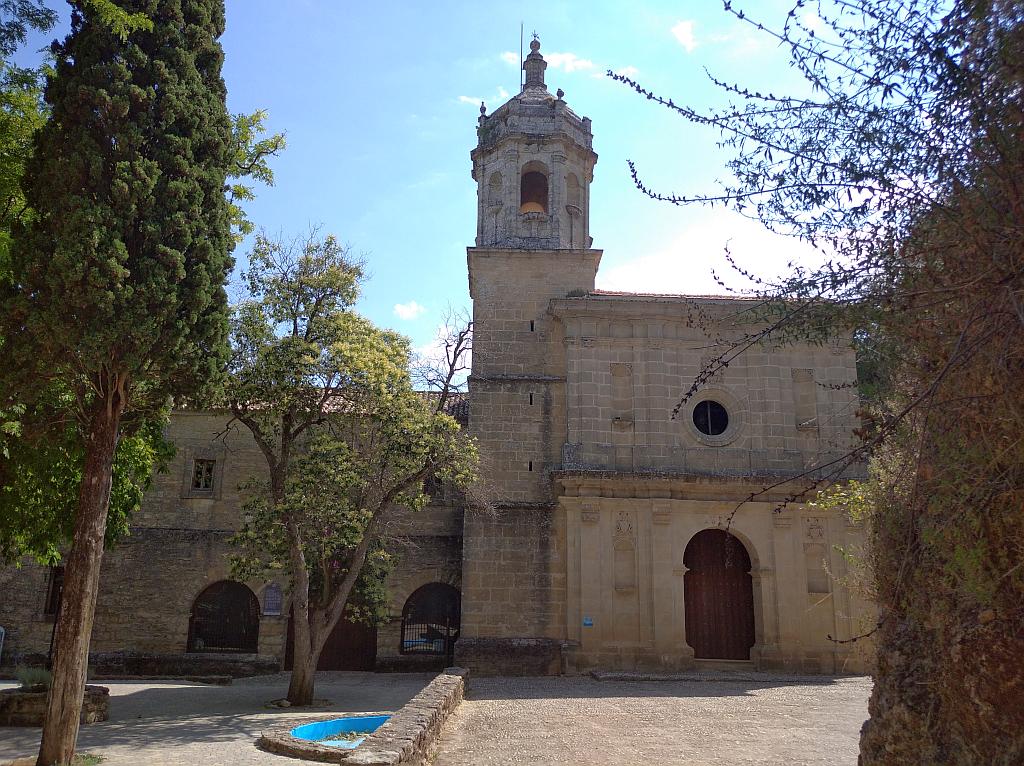
Gastronomy in Alcalá del Valle
Alcalá del Valle is known for its fertile gardens, which yield abundant aceitunas (olives), girasol (sunflower), and cereals that form the basis of a Mediterranean diet with a local twist. Asparagus, whether wild or cultivated, is a highlight in regional cuisine and is commonly enjoyed in dishes such as sopas de espárragos (asparagus soups) and revueltos de espárragos (asparagus scrambled eggs.)
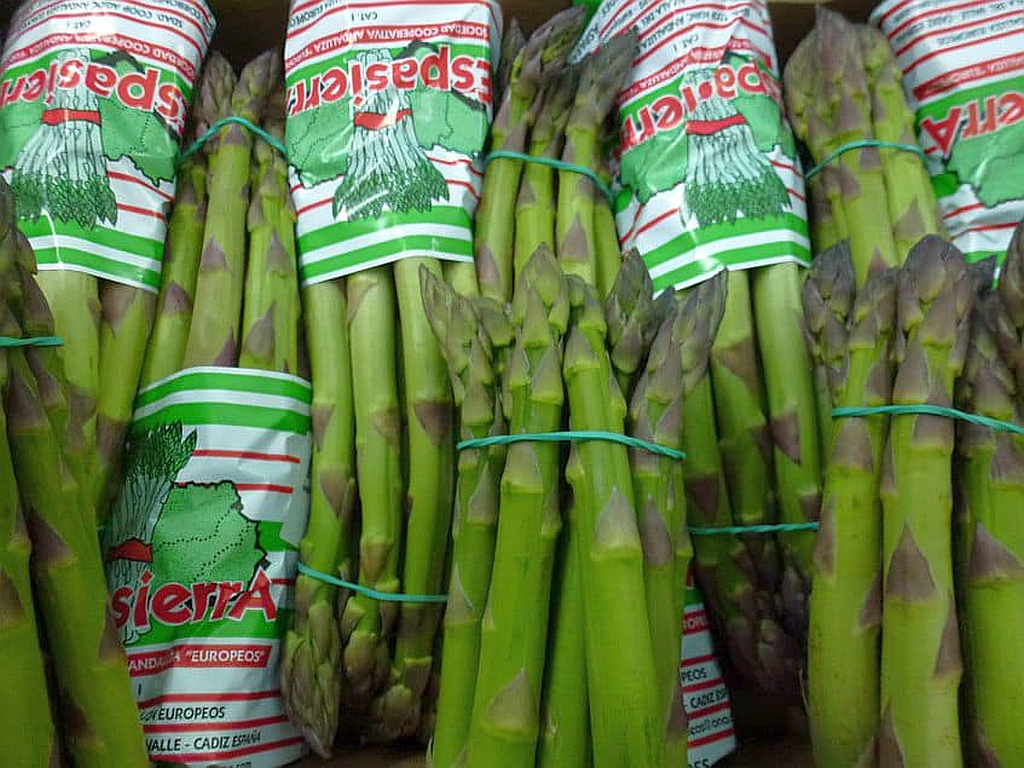
Local specialties also include embutidos (sausages), made from pork, with special attention to the prized jamón de pata negra (acorn-fed Iberian ham), known for its rich, nutty flavour. Traditional dishes like gazpachos, pucheros (stews), and the famous menudo serrano (a rich mountain stew made with various cuts of pork such as snout, stomach, and head) showcase Alcalá’s hearty, rustic cuisine.
Festivals and Events
Remember that dates are subject to change depending on the religious calender and weekends etc.
- Carnival (27 February – 1 March): A lively event with costumes, parades, and “búcaros” (traditional pottery). Alcalá’s comparsas (musical groups) and chirigotas (satirical folk groups) make this a vibrant celebration.
- Semana Santa (5 – 12 April): Holy Week in Alcalá begins with Palm Sunday and the Wednesday evening Via Crucis, with unique processions led by the town’s three main brotherhoods: the Hermandades of the Whites, Purples, and Reds.
- Romería de Caños Santos (1 May): A centuries-old pilgrimage celebrated every May, where the whole town follows a carriage carrying the Virgin, in a joyful procession.
- San Roque Fair (13 – 16 August): The largest festival in Alcalá, held in mid-August, brings visitors and emigrants back to celebrate with music, dancing, and feasting.
- Day of the Patroness, Virgen del Valle (8 September): The local festival dedicated to the Virgin of the Valley, marked by a grand procession.
- Romería de San Isidro Labrador (15 May): This pilgrimage features a blessing of the fields to celebrate the local agricultural heritage.
Ronda Today
Everything you need to know before you visit Ronda “The city of dreams” in Andalucia. https://www.rondatoday.com/
Visit Cádiz
Planning on visiting Cádiz? Tourist information. Monuments. Hotels. Activities. City guides: https://visitingcadiz.com/
The Caminito del Rey
Find tickets for the Caminito del Rey: https://www.caminodelrey.es/
Wildside Holidays – Spain
Take a trip on the Wildside! Discover the wildlife and nature of Spain, its Natural and National Parks and find the top wildlife, activity and walking holiday companies.
Iberia Nature Forum
Struggling with identifying those bugs and beasties? Why not check out the Iberia nature Forum! https://iberianatureforum.com/
I’ve been living in this lovely area of Western Andalucia for the last 20 years or so and dedicate most of my time to the running of English language tourist information websites for the towns of Cádiz, Ronda, Grazalema, the famous or infamous Caminito del Rey, and also Wildside Holidays, which promotes sustainable and eco-friendly businesses running wildlife and walking holidays in Spain. My articles contain affiliate links that will help you reserve a hotel, bus, train or activity in the area. You don’t pay more, but by using them you do support this website. Thankyou!
